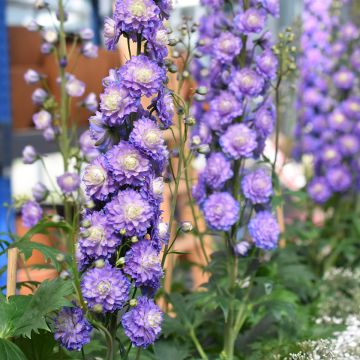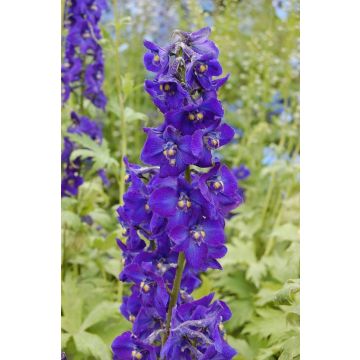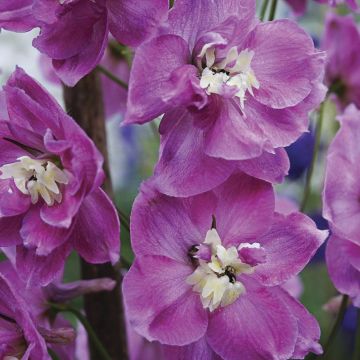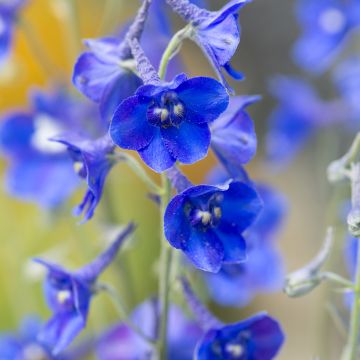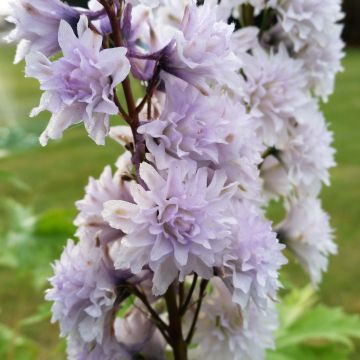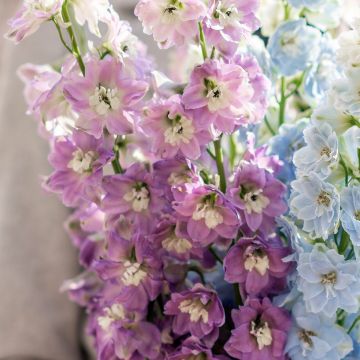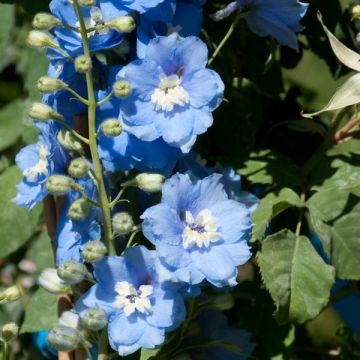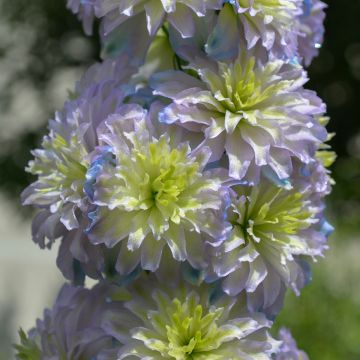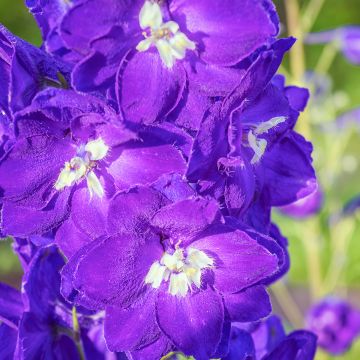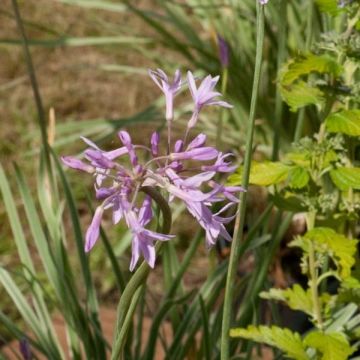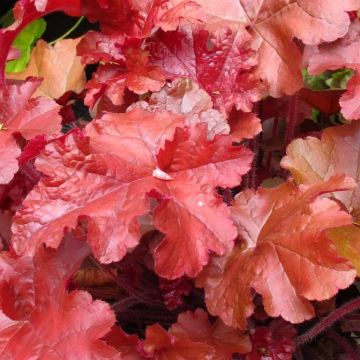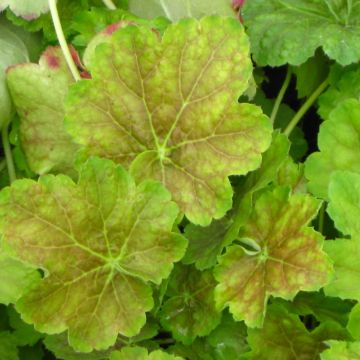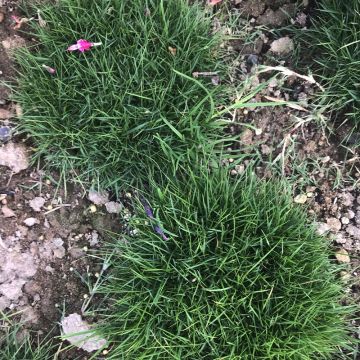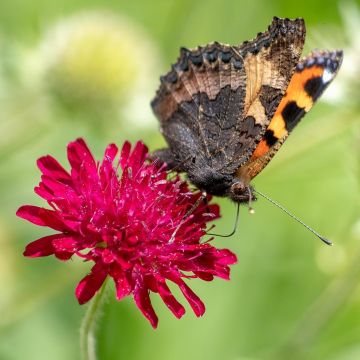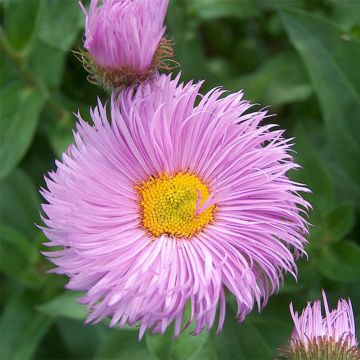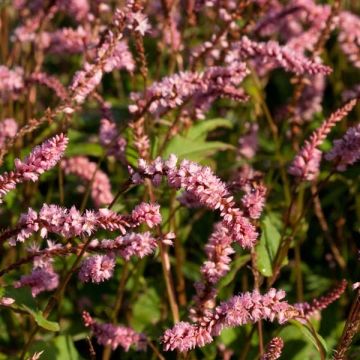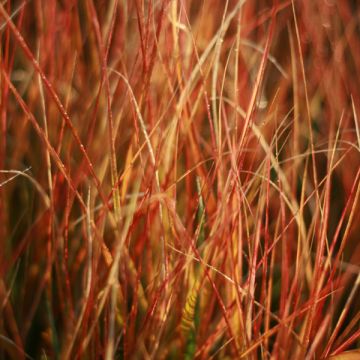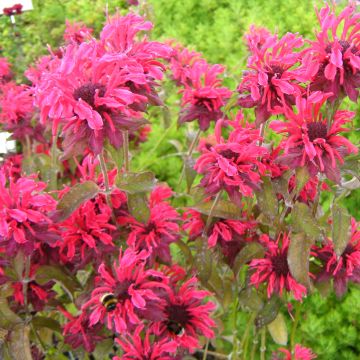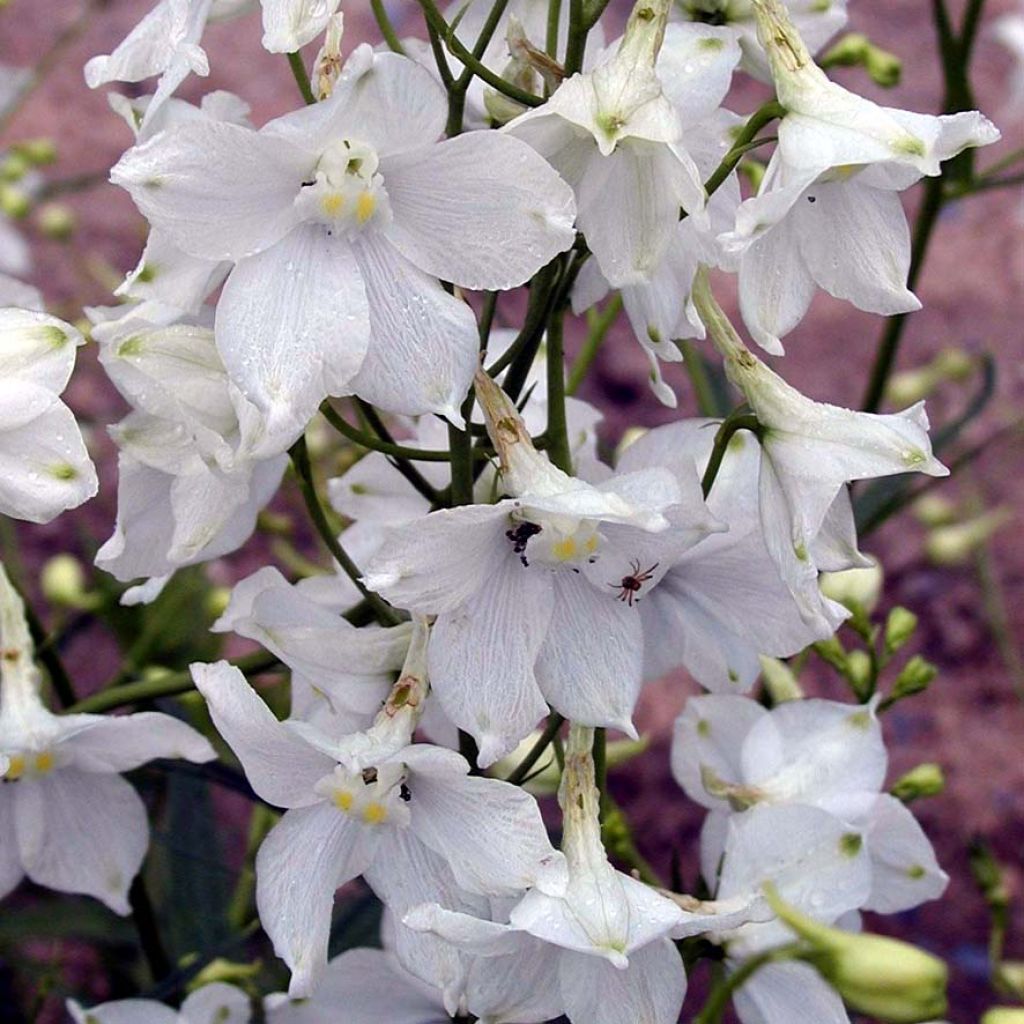

Delphinium Moerheimii - Larkspur
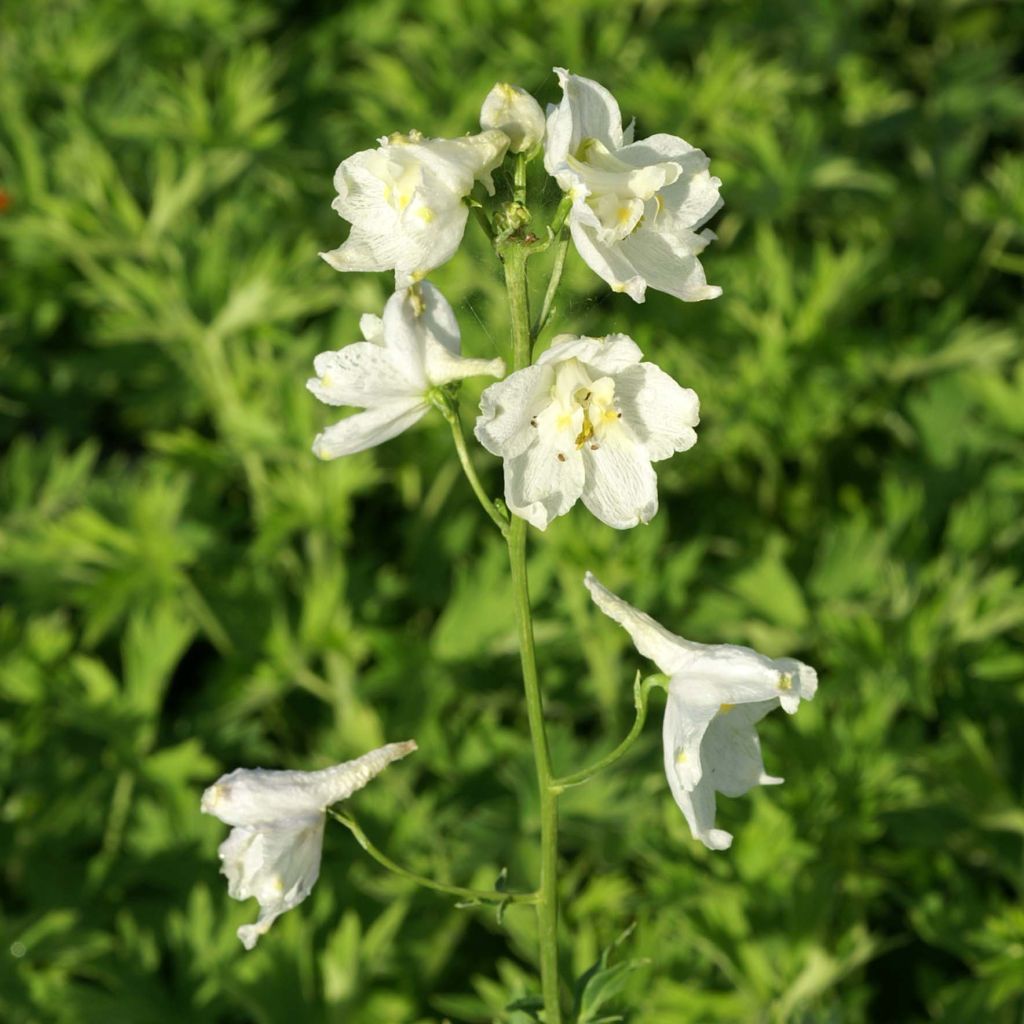

Delphinium Moerheimii - Larkspur
Delphinium Moerheimii - Larkspur
Delphinium x belladona Moerheimii
Belladonna Larkspur, Perennial Larkspur
This item cannot be shipped to the selected country
Delivery charge from €5.90
More information
Schedule delivery date,
and select date in basket
This plant carries a 12 months recovery warranty
More information
We guarantee the quality of our plants for a full growing cycle, and will replace at our expense any plant that fails to recover under normal climatic and planting conditions.
From €5.90 for pickup delivery and €6.90 for home delivery
Express home delivery from €8.90.
Does this plant fit my garden?
Set up your Plantfit profile →
Description
Delphinium 'Moerheimii' is a perennial larkspur in the Belladonna Group that is less spectacular than the 'Pacific' hybrids, but it is easier to grow and has a more natural appearance. This very bright variety offers long, airy spikes in summer, adorned with single, light and pure white flowers, enhanced by small pale yellow spots. This larkspur thrives in cool and humus-rich soils tolerates partial shade well. It is also more resistant to diseases and pests. An excellent perennial for borders, faithful and charming like the flowers of the past.
Delphinium 'Moerheimii' is a plant of the Ranunculaceae family belonging to a group of perennial varieties obtained by cross-breeding the Delphinium elatum and D. grandiflorum. 'Moerheimii' stands out for its good tolerance to partially shaded exposures. It reaches a height between 1m (3ft) and 1.30m (4ft), giving it an erect habit, but often requiring staking. Floral stems emerge from a clump of large palmate and finely divided leaves, usually in June-July. If the faded flower spikes are pruned, flowering will resume in September, depending on the climate. This variety produces unbranched spikes, 40cm (16in) long, adorned with 3 to 4cm (1 to 2in) diameter, single, graceful and light flowers. They are slightly translucent white, with a small yellow mark at the centre. The plant develops from a woody rootstock that sinks vertically into the soil. Its above-ground, deciduous vegetation emerges in spring and dries up in autumn. Young shoots must be protected from slugs, which are very fond of them.
Delphiniums are herbaceous perennial plants that are always very noticeable in a garden. Belladonna hybrid Delphiniums allow us to appreciate these plants in a different way, with the joy of finding them faithfully where we expect them, for several years. Their characteristic silhouette always adds height, verticality and a lot of charm to perennial plant borders, with an added lightness. They are good companions for moss or gallica roses, with which they form charming and romantic scenes. You can also create another beautiful combination with daylilies and hybrid mulleins. Their flowers hold up well in bouquets.
Note: From March to September, the stems of our delphiniums are pruned short to promote better branching of the stump and achieve optimal rooting. This pruning also prevents the stems from breaking during transport.
Report an error about the product description
Delphinium Moerheimii - Larkspur in pictures
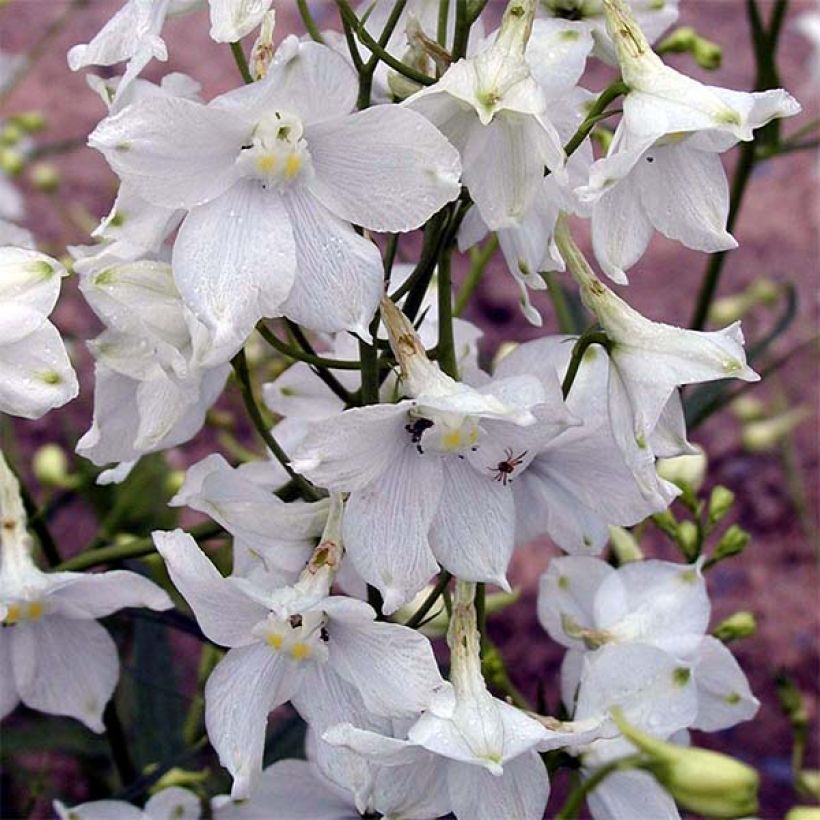

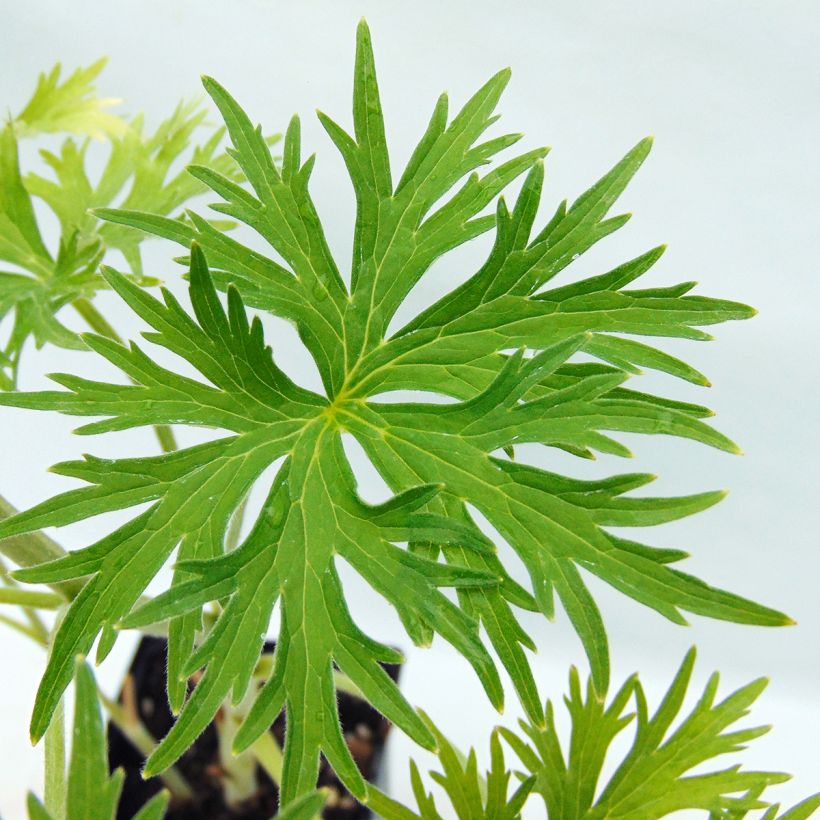

Flowering
Foliage
Plant habit
Safety measures
Botanical data
Delphinium
x belladona
Moerheimii
Ranunculaceae
Belladonna Larkspur, Perennial Larkspur
Cultivar or hybrid
ingestion
Cette plante est toxique si elle est ingérée volontairement ou involontairement.
Ne la plantez pas là où de jeunes enfants peuvent évoluer, et lavez-vous les mains après l'avoir manipulée.
Pensez à conserver l'étiquette de la plante, à la photographier ou à noter son nom, afin de faciliter le travail des professionnels de santé.
Davantage d'informations sur https://plantes-risque.info
Other Delphinium - Larkspur
Planting and care
Without being very difficult, the cultivation of Delphiniums still requires some precautions: these plants detest heavy and wet soils, as well as dry and poor soils. The soil that suits them is a good black soil, rich in humus, non-compact, fresh, even in summer, but without excess in winter, and sheltered from strong winds. Under these conditions, they will live for many years. Also beware of slugs which can cause damage at the beginning of vegetation.
Planting period
Intended location
Care
This item has not been reviewed yet - be the first to leave a review about it.
Fast maturing perennials
Haven't found what you were looking for?
Hardiness is the lowest winter temperature a plant can endure without suffering serious damage or even dying. However, hardiness is affected by location (a sheltered area, such as a patio), protection (winter cover) and soil type (hardiness is improved by well-drained soil).

Photo Sharing Terms & Conditions
In order to encourage gardeners to interact and share their experiences, Promesse de fleurs offers various media enabling content to be uploaded onto its Site - in particular via the ‘Photo sharing’ module.
The User agrees to refrain from:
- Posting any content that is illegal, prejudicial, insulting, racist, inciteful to hatred, revisionist, contrary to public decency, that infringes on privacy or on the privacy rights of third parties, in particular the publicity rights of persons and goods, intellectual property rights, or the right to privacy.
- Submitting content on behalf of a third party;
- Impersonate the identity of a third party and/or publish any personal information about a third party;
In general, the User undertakes to refrain from any unethical behaviour.
All Content (in particular text, comments, files, images, photos, videos, creative works, etc.), which may be subject to property or intellectual property rights, image or other private rights, shall remain the property of the User, subject to the limited rights granted by the terms of the licence granted by Promesse de fleurs as stated below. Users are at liberty to publish or not to publish such Content on the Site, notably via the ‘Photo Sharing’ facility, and accept that this Content shall be made public and freely accessible, notably on the Internet.
Users further acknowledge, undertake to have ,and guarantee that they hold all necessary rights and permissions to publish such material on the Site, in particular with regard to the legislation in force pertaining to any privacy, property, intellectual property, image, or contractual rights, or rights of any other nature. By publishing such Content on the Site, Users acknowledge accepting full liability as publishers of the Content within the meaning of the law, and grant Promesse de fleurs, free of charge, an inclusive, worldwide licence for the said Content for the entire duration of its publication, including all reproduction, representation, up/downloading, displaying, performing, transmission, and storage rights.
Users also grant permission for their name to be linked to the Content and accept that this link may not always be made available.
By engaging in posting material, Users consent to their Content becoming automatically accessible on the Internet, in particular on other sites and/or blogs and/or web pages of the Promesse de fleurs site, including in particular social pages and the Promesse de fleurs catalogue.
Users may secure the removal of entrusted content free of charge by issuing a simple request via our contact form.
The flowering period indicated on our website applies to countries and regions located in USDA zone 8 (France, the United Kingdom, Ireland, the Netherlands, etc.)
It will vary according to where you live:
- In zones 9 to 10 (Italy, Spain, Greece, etc.), flowering will occur about 2 to 4 weeks earlier.
- In zones 6 to 7 (Germany, Poland, Slovenia, and lower mountainous regions), flowering will be delayed by 2 to 3 weeks.
- In zone 5 (Central Europe, Scandinavia), blooming will be delayed by 3 to 5 weeks.
In temperate climates, pruning of spring-flowering shrubs (forsythia, spireas, etc.) should be done just after flowering.
Pruning of summer-flowering shrubs (Indian Lilac, Perovskia, etc.) can be done in winter or spring.
In cold regions as well as with frost-sensitive plants, avoid pruning too early when severe frosts may still occur.
The planting period indicated on our website applies to countries and regions located in USDA zone 8 (France, United Kingdom, Ireland, Netherlands).
It will vary according to where you live:
- In Mediterranean zones (Marseille, Madrid, Milan, etc.), autumn and winter are the best planting periods.
- In continental zones (Strasbourg, Munich, Vienna, etc.), delay planting by 2 to 3 weeks in spring and bring it forward by 2 to 4 weeks in autumn.
- In mountainous regions (the Alps, Pyrenees, Carpathians, etc.), it is best to plant in late spring (May-June) or late summer (August-September).
The harvesting period indicated on our website applies to countries and regions in USDA zone 8 (France, England, Ireland, the Netherlands).
In colder areas (Scandinavia, Poland, Austria...) fruit and vegetable harvests are likely to be delayed by 3-4 weeks.
In warmer areas (Italy, Spain, Greece, etc.), harvesting will probably take place earlier, depending on weather conditions.
The sowing periods indicated on our website apply to countries and regions within USDA Zone 8 (France, UK, Ireland, Netherlands).
In colder areas (Scandinavia, Poland, Austria...), delay any outdoor sowing by 3-4 weeks, or sow under glass.
In warmer climes (Italy, Spain, Greece, etc.), bring outdoor sowing forward by a few weeks.

































